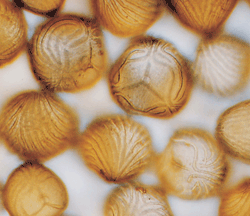My Cart
Your Shopping Cart is currently empty. Use Quick Order or Search to quickly add items to your order!

As a science teacher, you know the challenge of finding innovative genetics activities for your students. And you know that inquiry-based learning sparks student participation, develops critical-thinking skills, and generates ownership in the learning process. C-FERN®, a derived strain of Ceratopteris richardii, is a great organism for exciting inquiry-based investigations.
It's hard for students to understand the concept of alternation of generations. But C-FERN® makes it possible for students to quickly learn this cumbersome concept, as spore-to-spore development occurs in less than 90 days. Plus, students see the expression of a phenotype in both the gametophyte and sporophyte generations.
In addition to a rapid development time, C-FERN® is an excellent genetics model, with 2 distinct sexual types (male and hermaphrodite) and an array of mutant strains that can be easily manipulated. Carolina Biological Supply Company offers the wild type C-FERN® spores, maleless mutants, and F1 polka dot mutants.
Through Carolina's Genetics in Action: Mendelian Genetics Kit, students learn the basics of Mendelian inheritance in C-FERN® by following segregation of a visible marker—polka dot—in the F1 gametophyte and F2 sporophyte generations.
The polka dot mutation is a recessive trait that causes chloroplasts to assemble in a green polka dot pattern. Students sow spores of an F1 hybrid (wild type polka dot) to produce F1 gametophytes. Add water to mature F1 gametophytes to see random fertilization that produces the F2 sporophyte generation. Your students can observe and hypothesize from F1 gametophytes and analyze phenotypes and ratios in the F2 sporophyte generation. This demonstrates the Mendelian principles of segregation, random fertilization, and dominance/recessiveness.
The her1 mutation, which affects sexual differentiation in C-FERN®, is induced by x-irradiation of spores, which are easily seen in populations of gametophytes. The earliest germinating spores in the wild type population develop as hermaphrodites that produce the pheromone antheridiogen (ACe). This pheromone induces male development in gametophytes that are less than 6 days old.
As long as male gametophytes are in the presence of ACe, they remain male. However, when placed on fresh media without ACe, the vegetative cells within the male gametophyte cannot differentiate into normal male gametophytes.
In contrast, the maleless (her1) mutant results in the formation of hermaphrodite gametophytes, which are not responsive to ACe. Using Carolina's Battle of the Sexes Kit , students actively investigate this mutation by inoculating culture dishes for 7 days. Through teacher-guided inquiry, students can also test whether her1 is capable of responding to and producing ACe. Students determine if the her1 mutation is found in genes involved in the ACe signal transduction pathway or in the synthesis of ACe. Students can generate a hypothesis, design an experiment, and then test their hypothesis using prior knowledge.
C-FERN® is a broadly useful system that makes it ideal for use in both the classroom and student-initiated research.